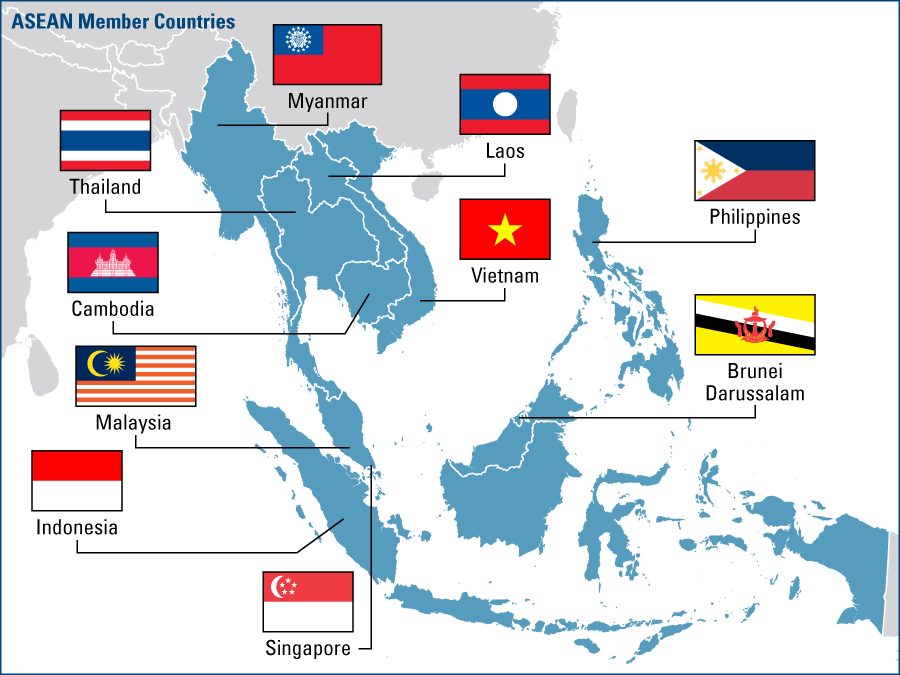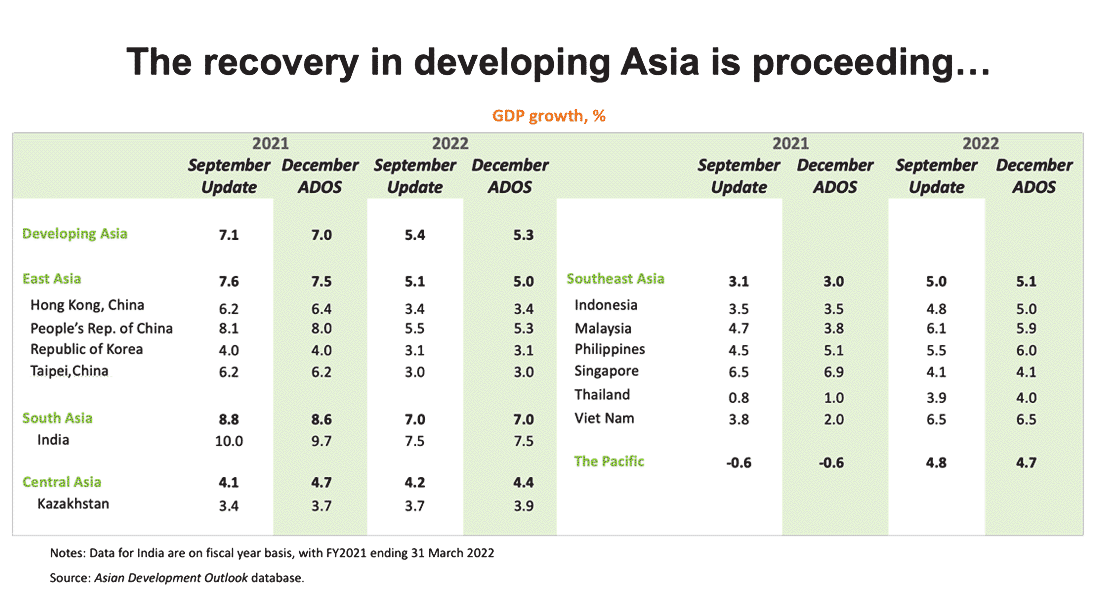At the heart of a vibrant region
Thailand is a preferred investment destination for many foreign corporations because of the country’s ideal position at the heart of the Association of Southeast Asian Nations, or ASEAN, where it has become a hub for a broad variety of activities, supported by a number of tax and trade incentives across the ten-member country bloc. Founded in 1967, the Association of Southeast Asian Nations (ASEAN) groups Brunei, Cambodia, Indonesia, Laos, Malaysia, Myanmar, the Philippines, Singapore, Thailand and Vietnam.

(image: ASEAN members)
Additionally, Thailand’s government has removed administrative barriers to make it easier for foreign investors to set up regional headquarters or production facilities in Thailand. This underlines the country’s role as a hub for products and services to an ever-more connected ASEAN community, a single market of over 655 million consumers. According to the first-of-its-kind ASEAN Development Outlook (ADO) report, the total combined GDP of ten ASEAN member countries in 2019 was valued at $3.2 trillion. Making ASEAN the fifth-largest economy in the world, well on track to become the fourth largest by 2030.

The regional gross domestic product (GDP) growth of 10 ASEAN member states plus China, Japan and South Korea will be 4.9 per cent for 2022, a recent report showed. The ASEAN+3 Macroeconomic Research Office (AMRO) published its quarterly update of the ASEAN+3 regional economic outlook in January 2022, and forecast the region’s inflation to remain relatively low at 2.9 per cent for 2022.
This ASEAN community, in which Thailand is centered, further opens up opportunities in regional growth areas such as transport, energy, healthcare, tourism and agriculture. Given Thailand’s comparative advantage in these areas, the country is well equipped to match the growing dynamism of the ASEAN community and the growth of foreign investments in the region.
To support regional connectivity in ASEAN, the government is committed to invest in logistics and transport networks including roads and rails that will link Thailand with its neighbors through important economic corridors. One of those projects is a high-speed railway connecting Bangkok with the northern province of Nong Khai, which border Laos, that will close up with an already under-construction high-speed railway route from there to Laos’ capital Vientiane and up north to China’s southern Yunnan province via the China-Lao Railway which was opened in December 2021, deemed to become an essential trade route between the countries.
There are also plans for a high-speed railway to connect Bangkok with the Eastern Economic Corridor in the Southeast which will provide a network between the country’s main airports, Suvarnabhumi and Don Mueang, as well as the U-Tapao Rayong-Pattaya International Airport in Rayong province.
Apart from China, other powerhouse economies such as Japan, South Korea, Taiwan and India are also easily reachable from Thailand by virtue of its world-class infrastructure for air, land, sea and rail transportation. The country also boasts excellent digital connectivity at an outstanding cost-effectiveness paired with a burgeoning logistics sector, features which become increasingly important for market participants in a growing digital economy to which Thailand is certainly no stranger.
Other Articles
ร่วมสร้างอนาคต
ไปกับอมตะ

ร่วมสร้างอนาคต
ไปกับอมตะ
ติดต่อเราเพิ่มเติม
(+66) 38 939 007
(+84) 251 3991 007 (ใต้)
(+84) 203 3567 007 (เหนือ)
(+95) 1 230 5627
(+856) 21 810007
(+856) 20 5710007 (จีน)
(+856) 20 57550007 (อังกฤษ)
© AMATA CORPORATION PCL. All rights reserved. Web by Toneyes







